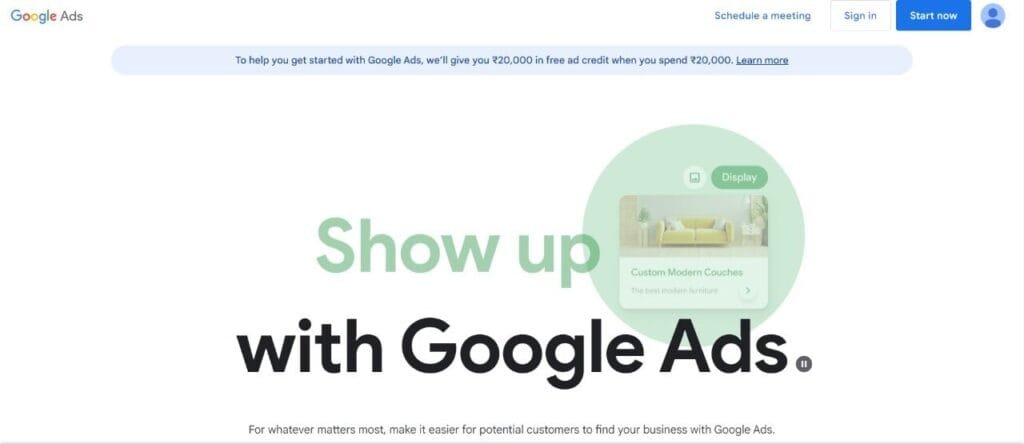This Article has been revised, edited and added to, by Poulomi Chakraborty.
- The Power of Authenticity
- The SEO Benefits of User-Generated Content
- Strategies for Encouraging User-Generated Content
- Creating a Community Platform
- Incentivizing Contributions
- Highlighting and Celebrating User Contributions
- Simplifying the Submission Process
- Encouraging Social Media Engagement
- Collaborating with Influencers and Advocates
- Utilizing Reviews and Testimonials
- Running Contests and Campaigns
- Engaging Through Customer Support
- Integrating User-Generated Content into Your SEO Strategy
- Best Practices for Managing User-Generated Content
- Leveraging Technology for UGC Management
- Legal and Ethical Considerations in Using User-Generated Content
- Creating a Sustainable UGC Strategy
- Leveraging UGC in Different Industries
- Conclusion
In the vast world of digital marketing, staying ahead of the competition often means exploring innovative strategies that resonate with your audience and improve your search engine rankings. One such powerful strategy is leveraging user-generated content (UGC). But what exactly is user-generated content, and how can it benefit your SEO efforts? In this article, we will delve into the intricacies of UGC, explore its impact on SEO, and provide actionable insights on how to effectively integrate it into your marketing strategy.
User-generated content is any content—text, images, videos, reviews, testimonials—created by users rather than the brand itself. This type of content is often perceived as more authentic and trustworthy by other consumers, making it an invaluable asset for businesses. When harnessed correctly, UGC can significantly enhance your online presence, drive more organic traffic, and boost your SEO performance.
The Power of Authenticity

One of the most compelling reasons to leverage user-generated content is its authenticity. In an age where consumers are increasingly skeptical of traditional advertising, authentic content can make a substantial difference.
User-generated content provides genuine insights and experiences from real customers, which can be far more persuasive than branded content. This authenticity not only builds trust but also encourages more engagement, which is crucial for SEO.
Engagement and SEO
Engagement is a critical factor in SEO. Search engines like Google prioritize content that generates interaction—be it comments, likes, shares, or other forms of engagement.
User-generated content naturally drives more engagement because it involves real people sharing their real experiences. When users interact with UGC, it sends positive signals to search engines, indicating that your content is valuable and relevant.
For instance, product reviews and testimonials can lead to longer time spent on your site, as potential customers read through the experiences of others. This increased dwell time can lower bounce rates and improve your site’s overall SEO performance.
Additionally, UGC often contains keywords and phrases that real users are searching for, enhancing your content’s relevance and visibility in search results.
Fresh Content and Indexing
Another advantage of user-generated content is the constant influx of fresh content. Search engines favor websites that are regularly updated with new content, and UGC provides a steady stream of fresh material.
Whether it’s new reviews, comments, or social media posts, this continuous flow of content keeps your website dynamic and engaging. It also helps with faster indexing, as search engines crawl your site more frequently when they detect regular updates.
Building Community and Loyalty
Leveraging user-generated content isn’t just about SEO; it’s also about building a community around your brand. When customers see their content featured on your website or social media, it fosters a sense of belonging and loyalty.
This sense of community can lead to repeat business and long-term customer relationships, which are invaluable for any business. Moreover, a loyal community is more likely to create additional content, perpetuating the cycle of engagement and fresh content.
Comparison: User-Generated Content vs. Branded Content
To fully appreciate the value of user-generated content, let’s compare it to branded content. Both types of content have their place in a comprehensive marketing strategy, but they serve different purposes and offer unique benefits.
Trust and Credibility
Branded content is carefully crafted by marketers to promote a specific message or product. While it can be highly informative and persuasive, it often lacks the genuine touch that UGC provides.
Consumers tend to trust UGC more because it comes from their peers—real people who have no vested interest in the brand. This trust can translate into higher conversion rates and more positive brand perception.
Cost and Scalability
Creating high-quality branded content can be time-consuming and expensive. It requires a team of writers, designers, and marketers to produce and distribute effectively. On the other hand, user-generated content is essentially free.
It leverages the creativity and experiences of your audience, allowing you to scale your content efforts without a significant investment. By encouraging customers to share their stories, you can amass a vast library of content at a fraction of the cost.
Engagement and Reach
While branded content can be engaging, it often doesn’t generate the same level of interaction as UGC. User-generated content is inherently more relatable, leading to higher engagement rates.
Additionally, when users share their content on their own social networks, it extends your reach beyond your immediate audience. This organic sharing can introduce your brand to new potential customers, expanding your digital footprint.

In the travel industry, User-Generated Content (UGC) isn’t just important, it’s vital. As the CEO of misstourist.com, I’ve learnt that travel is an experiential product and potential customers value peer experiences more than any well-crafted sales pitch.
Our method for soliciting UGC involves various ‘Call To Action’ prompts on our blog posts, newsletters, and social media platforms, encouraging our audience to share pictures, reviews or tips from their own trips.
We’ve found that running contests with rewards for best travel stories or photos is particularly effective in generating high-quality content. As for scaling, we amplify the best UGC on our social media, newsletters, and featured sections on our website.
It’s truly a win-win situation; our users get visibility while we gain authentic content that boosts engagement and trust. To track results, we closely monitor metrics such as user engagement, shares, and conversion rates attributed to the UGC.
We actively optimize by regularly updating our CTA prompts, fine-tuning our contest themes according to audience preferences, and conducting regular user surveys to understand what motivates them to contribute.
Yulia Saf, Miss Tourist.
The SEO Benefits of User-Generated Content
Enhanced Keyword Coverage
One of the most significant benefits of user-generated content for SEO is the extensive keyword coverage it can provide. When users create content, they use their own language and terminology, which often includes keywords and phrases that you might not have identified through traditional keyword research.
This organic use of diverse keywords can help your website rank for a broader range of search queries.
For example, if you run an online store selling fitness equipment, customers might write reviews or testimonials using specific product names, slang, or phrases you hadn’t considered. This variety enriches your site’s content, making it more likely to appear in search results for a wider array of keywords.
Increased Organic Traffic
With enhanced keyword coverage comes increased organic traffic. When your site ranks for more keywords, it naturally attracts more visitors. User-generated content also tends to perform well in long-tail keyword searches.
Long-tail keywords are longer and more specific phrases that users search for, and they often have higher conversion rates because they indicate a strong intent to purchase. By incorporating UGC, you can capture this valuable traffic, leading to more potential customers finding your site.
Improved Social Proof
Social proof is a powerful psychological phenomenon where people rely on the actions and opinions of others to determine their own behavior. In the context of online shopping, reviews, testimonials, and ratings serve as social proof, helping potential customers feel confident in their purchasing decisions.
Search engines recognize the value of social proof and often give higher rankings to sites with robust user-generated content.
When potential customers see positive reviews and high ratings, they’re more likely to trust your brand and convert. This trust is further amplified when reviews and testimonials are prominently displayed on your site and shared across social media platforms. As your social proof grows, so does your credibility and, ultimately, your search engine ranking.
Rich Snippets and Enhanced SERP Presence
User-generated content can also help you earn rich snippets in search engine results pages (SERPs). Rich snippets are enhanced search results that provide additional information beyond the standard title, URL, and meta description.
They can include reviews, ratings, images, and more. Rich snippets make your search listings more attractive and informative, which can increase click-through rates (CTR).
For example, if your product pages feature customer reviews with star ratings, these ratings can appear in search results as rich snippets. This not only makes your listing stand out but also provides immediate social proof to potential customers, increasing the likelihood of them clicking through to your site.
User Engagement Signals
Search engines use various signals to determine the quality and relevance of a website, and user engagement is a crucial factor. High levels of user engagement, such as time spent on site, pages per session, and low bounce rates, indicate that users find your content valuable.
User-generated content often leads to higher engagement because it offers diverse perspectives and authentic experiences that resonate with other users.
For instance, a lively comment section on your blog or an active community forum can keep visitors on your site longer, interacting with content and contributing their own insights. These positive engagement signals can boost your SEO, leading to better search rankings and more organic traffic.
Building Backlinks
Backlinks, or inbound links from other websites, are a key factor in SEO. They signal to search engines that your content is valuable and authoritative. User-generated content can help you build backlinks in several ways.
When users create content about your brand, they may share it on their own websites or social media profiles, linking back to your site.
Moreover, high-quality UGC, such as insightful reviews or compelling stories, can attract attention from other bloggers, journalists, and industry influencers. They might reference and link to this content in their own articles, providing you with valuable backlinks that enhance your SEO.
Local SEO Benefits
For businesses with a physical presence, user-generated content can be particularly beneficial for local SEO. Reviews and ratings on platforms like Google My Business, Yelp, and other local directories can improve your visibility in local search results. When users search for businesses in their area, those with positive reviews and high ratings are more likely to appear at the top of the results.
Encouraging customers to leave reviews and share their experiences can boost your local SEO efforts, driving more foot traffic to your store and increasing local brand awareness.

These days, where social media has such a major impact on businesses, user-generated content is pivotal. We do our best to interact with this kind of content whenever it gets posted – commenting on it, sharing it, duetting it, etc. – so that even more people can see it.
We also do our best to take note of who is creating this content. Is it people that fit within our target demographic, or is it not? We’ve actually adjusted some of our marketing strategy due to discovering that a significant percentage of UGC was being posted by a group we hadn’t considered a primary part of our audience.
Jeremy Yamaguchi, CEO of Lawn Love
Strategies for Encouraging User-Generated Content
Creating a Community Platform
One of the most effective ways to encourage user-generated content is by creating a dedicated community platform where your customers can share their experiences, ask questions, and interact with each other. This could be a forum on your website, a Facebook group, or any other platform where your audience feels comfortable engaging.
By fostering a sense of community, you not only encourage more user-generated content but also build stronger relationships with your customers. This engagement can lead to more loyalty and advocacy, which further fuels your content creation efforts.
Incentivizing Contributions
Incentives can be a powerful motivator for encouraging user-generated content. Consider offering rewards such as discounts, exclusive access to new products, or entries into a giveaway in exchange for reviews, testimonials, or social media posts. These incentives don’t have to be extravagant; even small rewards can significantly boost participation.
For example, a simple discount on the next purchase for every review submitted can encourage more customers to share their experiences. Ensure that your incentives align with your brand values and appeal to your target audience.
Highlighting and Celebrating User Contributions
Recognizing and celebrating your customers’ contributions can go a long way in encouraging more user-generated content. Highlight user-generated content on your website, social media channels, and marketing materials. Feature customer stories, share their photos, and showcase their reviews.
When customers see that their content is valued and appreciated, they are more likely to continue contributing. This recognition also encourages others to share their experiences, creating a positive cycle of engagement and content creation.
Simplifying the Submission Process
Making it easy for customers to create and share content is crucial. The simpler and more intuitive the submission process, the more likely users are to participate. Provide clear instructions and user-friendly interfaces for submitting reviews, uploading photos, or sharing stories.
For instance, adding a review form directly on your product pages or integrating social media sharing buttons can streamline the process. Ensure that your website is mobile-friendly, as many users will be interacting with your brand through their smartphones.
Encouraging Social Media Engagement
Social media platforms are a goldmine for user-generated content. Encourage your customers to share their experiences on social media by creating branded hashtags, running social media contests, and actively engaging with user posts. Repost and share user-generated content on your official social media profiles to show appreciation and inspire others to participate.
For example, a branded hashtag like #MyBrandStory can collect user posts in one place, making it easy to find and share their content. Contests that require users to post photos or stories using your products can also generate a significant amount of user-generated content.
Collaborating with Influencers and Advocates
Influencers and brand advocates can amplify your user-generated content efforts. Partner with influencers who resonate with your target audience and encourage them to create and share content related to your brand. Their followers are likely to trust their opinions and may be inspired to share their own experiences.
Brand advocates, or loyal customers who are passionate about your brand, can also be powerful allies. Encourage them to share their stories and provide them with tools and resources to create high-quality content. Their authentic enthusiasm can be contagious, encouraging others to join in.
Utilizing Reviews and Testimonials
Encouraging customers to leave reviews and testimonials is one of the most straightforward ways to generate user content. Follow up with customers after a purchase and invite them to share their feedback. Make the review process easy and accessible, and consider integrating review prompts into your post-purchase emails.
Displaying reviews prominently on your product pages not only provides social proof but also encourages more customers to leave their own reviews. Highlighting positive testimonials in your marketing materials can further reinforce the value of user-generated content.
Running Contests and Campaigns
Contests and campaigns can be highly effective in generating a large amount of user-generated content in a short period. Design contests that require users to create and share content related to your brand. Offer appealing prizes to motivate participation and ensure the contest rules are simple and clear.
For example, a photo contest where customers share pictures of themselves using your product can generate a wealth of visual content. Campaigns that ask customers to share their personal stories or experiences with your brand can also yield compelling and authentic content.
Engaging Through Customer Support
Customer support interactions can also be a source of user-generated content. Encourage satisfied customers to share their positive experiences with your support team on social media or review platforms. When customers feel heard and valued, they are more likely to share their positive experiences.
Provide easy ways for customers to share feedback directly from their support interactions. Follow up with a request for a review or testimonial after resolving an issue to capture these valuable insights.

Integrating User-Generated Content into Your SEO Strategy
Optimizing User-Generated Content for Search Engines
To maximize the SEO benefits of user-generated content, it’s essential to optimize it for search engines. This involves ensuring that UGC is properly indexed and contributes to your overall SEO strategy. Here are some key steps:
Implementing Schema Markup
Schema markup helps search engines understand the content on your website better. By implementing schema markup for reviews, ratings, and other forms of UGC, you can enhance your search listings with rich snippets. This not only makes your listings more attractive but also improves click-through rates.
For example, adding schema markup to product reviews can result in star ratings appearing directly in search results, providing immediate social proof to potential customers. This can significantly increase the visibility and attractiveness of your search results.
Moderating Content for Quality
While UGC is invaluable, it’s important to ensure the quality of the content. Regularly moderate and curate user-generated content to filter out spam, inappropriate comments, and irrelevant contributions. High-quality UGC not only enhances user experience but also sends positive signals to search engines.
Consider implementing moderation tools and guidelines to maintain the quality of content. This can include automated filters for spam and inappropriate language, as well as manual reviews of submitted content. By maintaining high standards, you ensure that your UGC is valuable and contributes positively to your SEO efforts.
Encouraging Keyword-Rich Content
While it’s important to maintain authenticity, gently encouraging users to include relevant keywords in their contributions can help boost your SEO. For instance, you could provide prompts or questions that naturally elicit keyword-rich responses.
This could be in the form of review questions like, “How did the [product name] help you achieve your fitness goals?”
However, it’s crucial to strike a balance between encouraging keyword use and maintaining authenticity. Users should feel free to express themselves naturally without feeling pressured to include specific keywords.
Leveraging UGC Across Multiple Channels
User-generated content is versatile and can be leveraged across various digital channels to enhance your SEO strategy. Here’s how you can effectively use UGC on different platforms:
Website Integration
Incorporate UGC directly into your website’s main pages, such as the homepage, product pages, and blog. Displaying reviews, testimonials, and user photos prominently can enhance user experience and engagement. Additionally, ensure that this content is crawlable by search engines to maximize its SEO impact.
For example, a section on your homepage featuring the latest customer reviews or a gallery of user-submitted photos can make your site more engaging and trustworthy. This not only improves user experience but also increases the likelihood of attracting organic traffic through SEO.
Social Media Utilization
Social media platforms are ideal for promoting user-generated content. Share user posts, photos, and stories on your official profiles to boost engagement and reach. Encourage followers to use branded hashtags and participate in social media campaigns.
By consistently sharing UGC on social media, you can drive more traffic to your website and enhance your brand’s visibility. Additionally, social signals from platforms like Facebook, Instagram, and Twitter can indirectly impact your SEO by increasing brand awareness and generating more backlinks.
Email Marketing
Integrate user-generated content into your email marketing campaigns to enhance their effectiveness. Featuring customer reviews, photos, and testimonials in your emails can boost credibility and engagement. Personalized emails with UGC can also encourage recipients to visit your site and contribute their own content.
For example, a post-purchase email that includes a review from another satisfied customer can encourage new customers to leave their own reviews. This not only generates more UGC but also reinforces the trustworthiness of your brand.
Tracking and Measuring the Impact of UGC on SEO
To ensure that your efforts are paying off, it’s important to track and measure the impact of user-generated content on your SEO performance. Here are some key metrics and tools to consider:
Traffic and Engagement Metrics
Monitor metrics such as organic traffic, time on site, pages per session, and bounce rate to assess the impact of UGC on user engagement. Use tools like Google Analytics to track these metrics and identify trends over time.
For instance, if you notice an increase in organic traffic and longer sessions after implementing UGC, it’s a good indicator that your strategy is working. Analyzing these metrics can help you fine-tune your approach and maximize the benefits of UGC.
Conversion Rates
Track conversion rates to determine how user-generated content influences purchasing decisions. Compare conversion rates before and after implementing UGC to measure its effectiveness. Use tools like Google Analytics’ Goals and Ecommerce tracking to gather detailed insights.
Higher conversion rates post-UGC implementation indicate that users are finding the content valuable and trustworthy. This can validate the effectiveness of your UGC strategy and highlight areas for further improvement.
Search Engine Rankings
Monitor your search engine rankings for target keywords to see how UGC is impacting your SEO. Use tools like Google Search Console and third-party SEO software to track keyword performance and identify any improvements or declines.
Improvements in rankings for a broader range of keywords suggest that UGC is enhancing your site’s relevance and authority. Regularly reviewing your rankings can help you adjust your strategy and maintain optimal SEO performance.
Success Stories with User-Generated Content
Examining real-world examples can provide valuable insights into the effectiveness of user-generated content for SEO. Here are a few case studies of brands that have successfully leveraged UGC to boost their SEO performance:
GoPro
GoPro, the action camera company, has effectively used user-generated content to build its brand and enhance SEO. By encouraging customers to share their adventure videos and photos, GoPro has amassed a vast library of authentic, engaging content. This UGC not only fuels their social media and marketing campaigns but also drives significant organic traffic to their website.
The use of branded hashtags like #GoPro and social media contests has further amplified their reach, generating millions of views and interactions. As a result, GoPro’s website ranks highly for numerous related keywords, and their SEO performance has seen substantial improvements.
Starbucks
Starbucks has long been a pioneer in leveraging user-generated content for marketing and SEO. Through initiatives like the #RedCupContest, where customers share photos of their holiday-themed Starbucks cups, the company has generated a wealth of UGC that resonates with their audience.
These campaigns not only boost engagement and brand loyalty but also drive traffic to Starbucks’ website and social media profiles. The consistent influx of fresh, authentic content has helped Starbucks maintain strong search engine rankings and a vibrant online presence.
Best Practices for Managing User-Generated Content

Establish Clear Guidelines
To ensure that user-generated content aligns with your brand values and quality standards, establish clear guidelines for submissions. These guidelines should outline acceptable content types, language, and tone. By setting expectations upfront, you can maintain the quality of UGC and avoid potential issues.
For example, a clothing retailer might request that customer photos be well-lit and focus on the product, ensuring that the UGC is visually appealing and relevant.
Monitor and Moderate Content
Active monitoring and moderation of user-generated content are crucial to maintaining its quality and relevance. Use moderation tools to filter out spam and inappropriate content automatically. Additionally, designate team members to review and approve user submissions manually.
Regular moderation helps ensure that only high-quality, relevant content is published, enhancing user experience and contributing positively to your SEO efforts.
Encourage Honest Feedback
Encourage customers to provide honest and detailed feedback in their reviews and testimonials. Authentic feedback, even if it’s not entirely positive, can build trust and credibility with your audience. Responding to reviews, both positive and negative, demonstrates that you value customer input and are committed to improving their experience.
For instance, addressing a negative review with a thoughtful and constructive response can turn a dissatisfied customer into a loyal one, while also showcasing your brand’s commitment to customer satisfaction.
Showcase UGC Prominently
Make user-generated content a central part of your marketing strategy by showcasing it prominently on your website and social media channels. Highlighting UGC not only provides social proof but also encourages more customers to contribute their own content.
For example, create dedicated sections on your product pages for customer reviews and photos, or feature user stories in your blog and newsletters. By making UGC a focal point, you can maximize its impact on your SEO and overall brand perception.
Leveraging Technology for UGC Management

UGC Platforms and Tools
Numerous platforms and tools can help you manage and optimize user-generated content. These tools can streamline the collection, moderation, and display of UGC, making it easier to integrate into your SEO strategy. Some popular UGC platforms include Yotpo, Bazaarvoice, and Olapic.
These platforms offer features like automated content moderation, customizable review forms, and seamless integration with your website and social media channels. By leveraging these tools, you can efficiently manage UGC and ensure it contributes positively to your SEO efforts.
Analytics and Tracking
To measure the impact of user-generated content on your SEO, use analytics tools to track key performance metrics. Tools like Google Analytics, Moz, and SEMrush can provide valuable insights into how UGC is affecting your organic traffic, search rankings, and user engagement.
By regularly analyzing these metrics, you can identify trends and make data-driven decisions to optimize your UGC strategy. For example, if you notice that user reviews with specific keywords are driving more traffic, you can encourage customers to include those keywords in their submissions.
Integrating UGC with Content Marketing
User-generated content can complement and enhance your broader content marketing efforts. Here’s how to integrate UGC with various content marketing strategies:
Blog and Article Content
Incorporate user-generated content into your blog posts and articles to add authenticity and diverse perspectives. Feature customer stories, quotes, and reviews to enrich your content and provide real-world examples.
For instance, if you’re writing a blog post about the benefits of your product, include testimonials and photos from satisfied customers to reinforce your message. This not only makes your content more engaging but also improves its SEO value by incorporating authentic, keyword-rich UGC.
Video Marketing
User-generated videos can be a powerful addition to your video marketing strategy. Encourage customers to create and share videos showcasing their experiences with your products or services. Feature these videos on your website, YouTube channel, and social media profiles.
Video content is highly engaging and can significantly boost your SEO efforts. Search engines favor websites with diverse content types, and user-generated videos can help you capture more traffic and improve your search rankings.
Email Campaigns
Enhance your email marketing campaigns by incorporating user-generated content. Feature customer reviews, photos, and testimonials in your newsletters and promotional emails to build trust and credibility with your audience.
For example, a post-purchase email that includes a positive review from another customer can encourage recipients to leave their own reviews and make repeat purchases. This not only generates more UGC but also strengthens your relationship with your customers.
Social Media Campaigns
Run social media campaigns that encourage users to create and share content related to your brand. Use branded hashtags, contests, and challenges to engage your audience and generate a steady stream of UGC.
By regularly sharing user-generated content on your social media profiles, you can increase engagement, drive traffic to your website, and enhance your SEO efforts. Social media signals can indirectly impact your search rankings by boosting brand awareness and generating backlinks.
Legal and Ethical Considerations in Using User-Generated Content

Obtaining Permissions and Rights
When leveraging user-generated content, it’s crucial to obtain proper permissions and rights from the content creators. Always ask for explicit consent before using any UGC in your marketing materials, website, or social media channels. This not only protects you legally but also builds trust with your audience.
For example, when running a social media contest, include clear terms and conditions stating how the content will be used and that participants are granting you permission to use their submissions. Use disclaimers and consent forms where necessary to ensure that all parties are aware of their rights and obligations.
Giving Credit to Content Creators
Acknowledging and giving credit to content creators is not only ethical but also encourages more users to share their content. Always credit the original creators when using their photos, videos, or reviews. This can be as simple as tagging them on social media, mentioning their name in a blog post, or linking to their original content.
Giving credit shows respect for the creators’ work and encourages a positive relationship between your brand and its audience. It also enhances the authenticity of the UGC, as it highlights real people and their genuine experiences with your brand.
Handling Negative UGC
Negative user-generated content can be challenging, but it’s important to handle it with care and professionalism. Address negative reviews and feedback promptly and constructively. Show empathy and a willingness to resolve any issues, which can turn a negative experience into a positive one and demonstrate your commitment to customer satisfaction.
For instance, responding to a negative review with an apology and an offer to make things right can improve your brand’s image and possibly convert a dissatisfied customer into a loyal one. Additionally, handling negative feedback transparently can build trust with other potential customers who see that you are responsive and care about your customers’ experiences.
Ensuring Content Authenticity
With the rise of fake reviews and fraudulent content, ensuring the authenticity of user-generated content is more important than ever. Use verification methods to confirm that the content is genuine and created by real customers. This can include verifying purchase history or implementing review authenticity checks.
Authentic UGC is crucial for maintaining trust and credibility with your audience. By taking steps to ensure the content is real, you protect your brand’s reputation and provide valuable, trustworthy information to potential customers.
Creating a Sustainable UGC Strategy
Long-Term Engagement Plans
Developing a sustainable user-generated content strategy requires long-term engagement plans. Instead of one-off campaigns, aim to create ongoing opportunities for customers to share their experiences. This can include regular contests, community events, or continuous incentives for contributions.
For example, monthly photo contests or themed challenges can keep the momentum going and continuously generate fresh content. These recurring initiatives help maintain a steady flow of UGC and keep your audience engaged over the long term.
Integrating UGC into Product Development
User-generated content can also provide valuable insights for product development. Analyze feedback, reviews, and user experiences to identify common themes and suggestions. This information can guide product improvements, new features, or entirely new product lines.
Incorporating customer feedback into product development not only leads to better products but also shows your audience that you value their input. This can enhance customer loyalty and encourage even more UGC as users see their suggestions being implemented.
Measuring ROI of UGC
To fully understand the impact of user-generated content on your business, it’s essential to measure its return on investment (ROI). Track metrics such as increased traffic, conversion rates, and customer engagement to gauge the effectiveness of your UGC strategy.
Tools like Google Analytics, social media analytics, and customer feedback platforms can provide comprehensive data on how UGC is contributing to your goals. By analyzing this data, you can refine your strategy, allocate resources more effectively, and demonstrate the value of UGC to stakeholders.
Adapting to Changing Trends
The digital landscape is constantly evolving, and so are the ways in which users create and share content. Stay updated with the latest trends and technologies in user-generated content to keep your strategy relevant and effective. This might include adopting new social media platforms, utilizing emerging content formats like live video, or leveraging innovative tools for content creation and moderation.
Being adaptable and open to change ensures that your UGC strategy remains fresh and engaging, continuously driving SEO and business growth.
Leveraging UGC in Different Industries

E-commerce
In the e-commerce industry, user-generated content is particularly valuable. Product reviews, unboxing videos, and customer photos can significantly influence purchasing decisions. Encourage customers to leave reviews and share their experiences on social media to enhance product pages and drive organic traffic.
Travel and Hospitality
For travel and hospitality businesses, UGC like travel photos, reviews, and travel stories can greatly enhance your online presence. Encourage guests to share their experiences and feature their content on your website and social media channels to build credibility and attract more visitors.
Fashion and Beauty
In the fashion and beauty industry, user-generated content such as outfit posts, makeup tutorials, and product reviews can drive significant engagement. Create hashtags, run contests, and collaborate with influencers to generate a steady stream of UGC that showcases your products in real-world settings.
Technology and Gadgets
For tech companies, user-generated content like reviews, how-to videos, and unboxing experiences can help build trust and demonstrate product functionality. Encourage tech enthusiasts to share their experiences and provide platforms for detailed reviews and discussions.

In the digital marketing industry, particularly in running DesignRush, a B2B marketplace for professional agencies, user-generated content (UGC) plays a critical role.
It’s a cornerstone of our marketing strategy and is widely utilized by most start-ups in our space. We understand that authentic user-contributed material can significantly strengthen the trust between us and our audience.
We primarily solicit UGC through multiple channels, such as running contests on social media, offering incentives for reviews, and featuring user stories on our website.
This approach brings us closer to our audience, encourages participation, and generates marketable content. Scaling it involves a planned content calendar, strong SEO strategies, and using targeted advertisements to reach a wider audience. Our tracking is primarily analytics-driven.
We monitor key performance indicators such as engagement, conversions, and SEO rankings to understand the effectiveness of the UGC. Those metrics help us optimize our future strategies. Through regular A/B testing and analytics tracking, we ensure our UGC strategies are on point and continue to deliver value for our business.
Gianluca Ferruggia, General manager at DesignRush
Conclusion
Leveraging user-generated content for SEO is a dynamic and powerful strategy that offers numerous benefits for brands. By integrating authentic user experiences into your digital marketing efforts, you can enhance search engine rankings, boost organic traffic, and foster a loyal customer community. Encourage and celebrate customer contributions, optimize UGC for search engines, and utilize it across multiple channels to maximize its impact.
Always prioritize authenticity and ethical practices to build trust and credibility. By continuously engaging with your audience and adapting to new trends, you can create a vibrant, SEO-friendly online presence that drives long-term success. Embrace the potential of user-generated content to not only enhance your SEO but also to build deeper, more meaningful connections with your customers.
READ NEXT:
- SaaS Content Clusters: Creating Comprehensive Resources
- How CRM can Skyrocket your Customer Retention! (and Boost LTV)
- Understanding SEO for Educational Institutions: A Beginner’s Guide
- How to Create a Digital Marketing Plan: The Complete Guide
- How to Set Up Conversion Tracking for Booking Engines





















Comments are closed.